The Thermal Data
A total of 6 tests were conducted at 1.0 GPM with fan speeds of 750 rpm, 1300 rpm and 1850 rpm being run in ‘Push Only’ and ‘Push/Pull’. All inclusive this testing takes between 40 – 50 hours of logging time (plus processing the data) to get the results that are presented.
Below is the final data results gathered from at least 5 data logging runs at the flow rate and fan rpm combination. The most stable 15 minute period from each logging run was used and then averaged with the other runs to obtain the data for the table below. A total of 16 temperature sensors are used in the thermal test chamber (8 air in, 2 air out, 3 water in, 3 water out). Each sensor takes a reading every second and is logged via a CrystalFontz unit.
The data in the table below is the averaged results of the logging runs which has then been used to create all the plots and tables there-after.
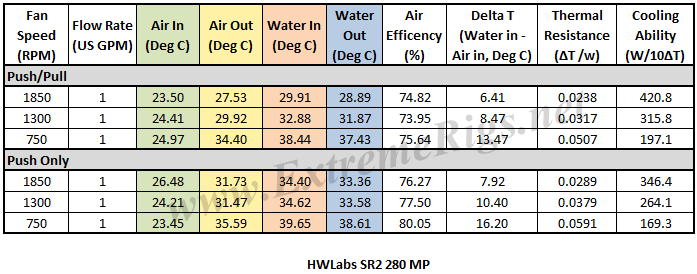 The performance metric of critical importance is the delta between the warm coolant temperature in and the cool ambient air temperature going into the radiator. Given that the system is well insulated and in equilibrium and we know the heat input to the system then we can also calculate a very important number. That number is the amount of power required to raise the coolant temperature by set amount. That amount is typically 1C or 10C. The latter is a more useful reference point.
The performance metric of critical importance is the delta between the warm coolant temperature in and the cool ambient air temperature going into the radiator. Given that the system is well insulated and in equilibrium and we know the heat input to the system then we can also calculate a very important number. That number is the amount of power required to raise the coolant temperature by set amount. That amount is typically 1C or 10C. The latter is a more useful reference point.
Let’s take a look at the Delta T results from the tests. Note that the extrapolation of the curve is much more sensitive to error than in the tested range.
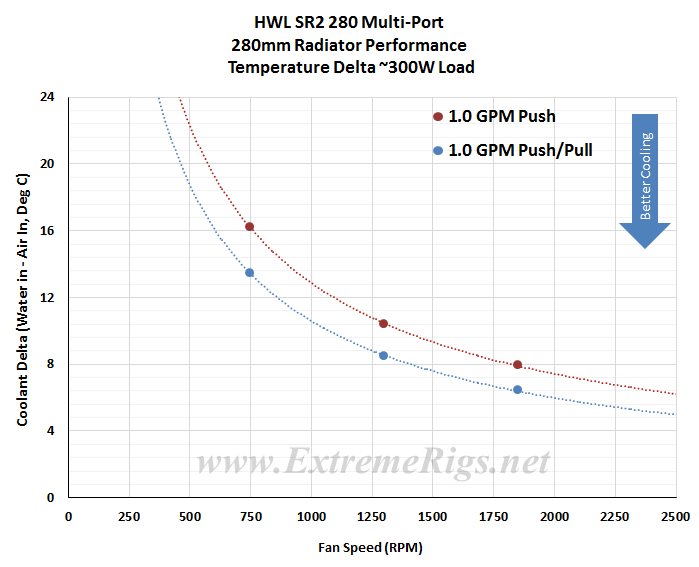 I was not too concerned about the actual delta numbers but instead the trend pattern. As we should expect, the deltas come down significantly as the fan speed is increased.
I was not too concerned about the actual delta numbers but instead the trend pattern. As we should expect, the deltas come down significantly as the fan speed is increased.
Delta T results (as above) are not always helpful when thinking about how many radiators you would need to cool your system. Instead it’s more useful to know the metric of W/Delta C. This metric is plotted below. It tells us how many Watts are dissipated by the radiator when the coolant rises 10C above ambient temperatures. (W/10 Delta T):
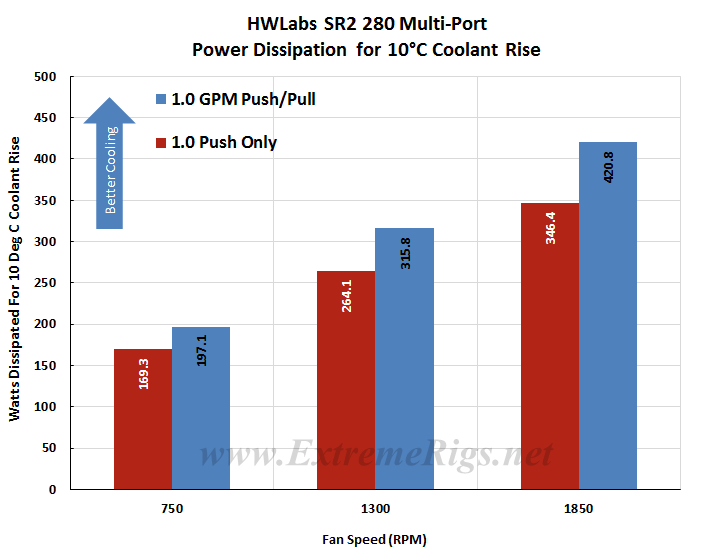 There is an average difference of ~16% between Push Only and Push Pull at the same fan speeds with a spread from ~14% at 750rpm to ~18% at 1850 rpm. As the percentages are not significantly different with increasing fan speeds, it perhaps indicates that the SR2 280 MP is capable of good all round performance. Perhaps of more significance is the rising variance with faster fan speeds which often suggests a bias towards higher speed fans. This would make sense given the thick core, despite the low FPI count.
There is an average difference of ~16% between Push Only and Push Pull at the same fan speeds with a spread from ~14% at 750rpm to ~18% at 1850 rpm. As the percentages are not significantly different with increasing fan speeds, it perhaps indicates that the SR2 280 MP is capable of good all round performance. Perhaps of more significance is the rising variance with faster fan speeds which often suggests a bias towards higher speed fans. This would make sense given the thick core, despite the low FPI count.
This same data can now be plotted on a chart so that an end user can interpolate their own fan speed. Note again that the extrapolation of the curve is much more sensitive to error than in between the tested range.
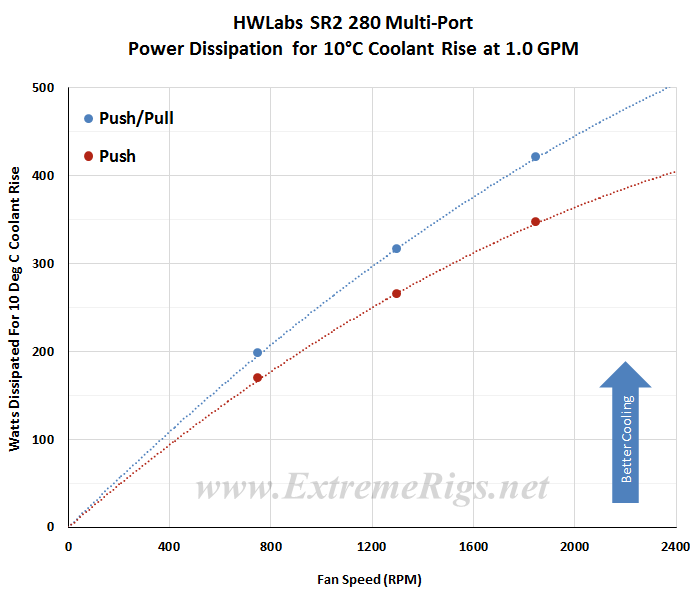 The Push/Pull data curve is still reasonably straight indicating plenty more performance up it’s sleeve while the Push Only has started to curve over. This perhaps indicates a bias towards a Push/Pull fan assembly.
The Push/Pull data curve is still reasonably straight indicating plenty more performance up it’s sleeve while the Push Only has started to curve over. This perhaps indicates a bias towards a Push/Pull fan assembly.
Now let’s analyze that data some more…
![]()








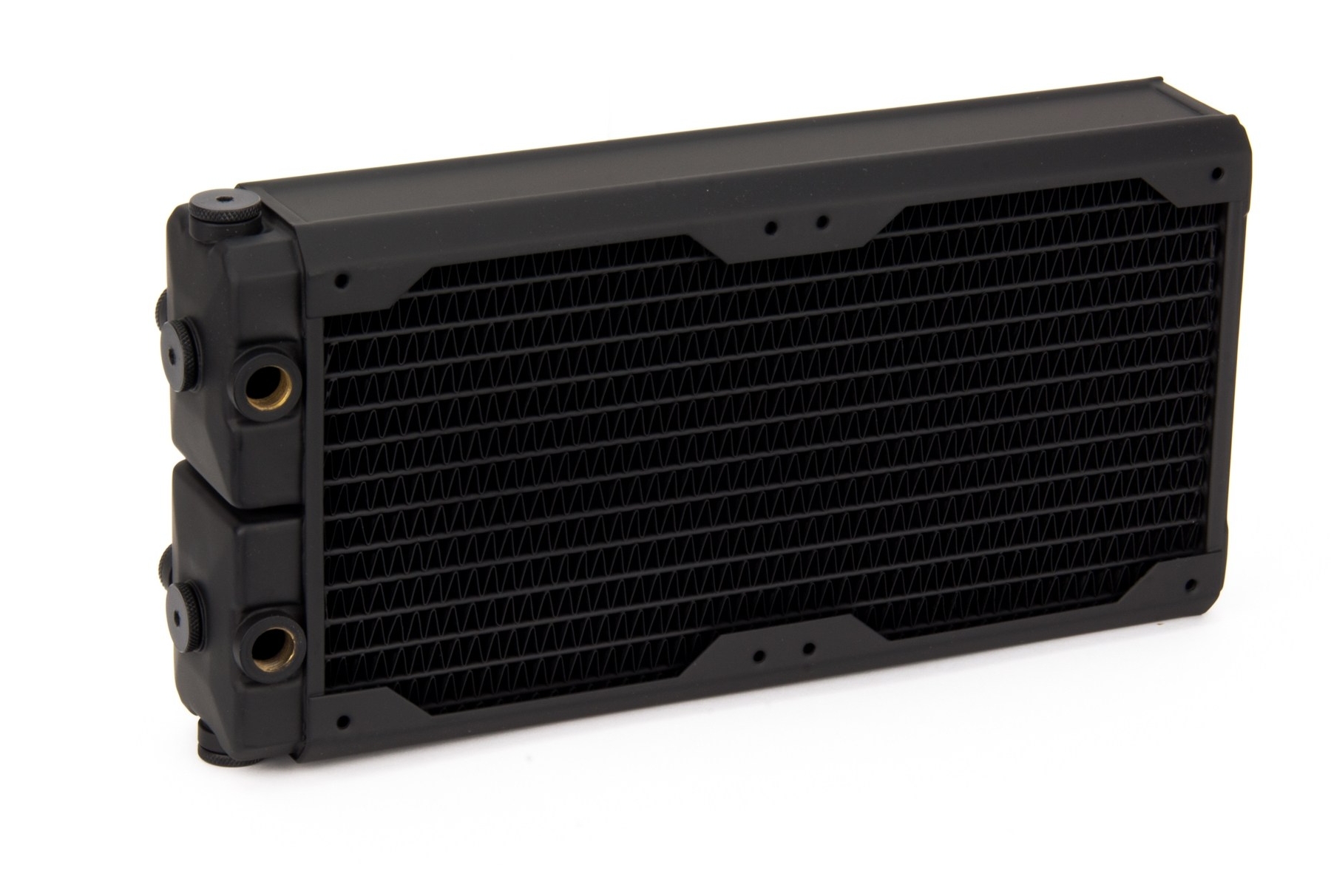



Are the numbers the same for the non MP two port version??
Thanks
They should be as the core is the same. The restriction may change slightly depending on the ports used I suppose.
Comments are closed.